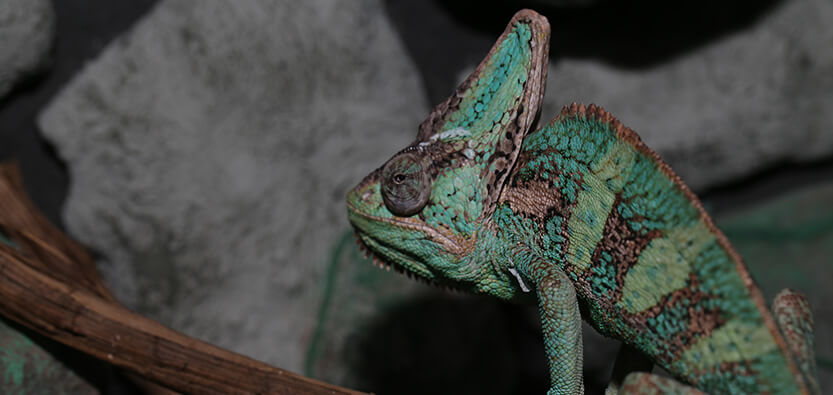Chameleon
Chameleons (Chamaeleonidae) are old world lizards. There are approximately 160 species of chameleons divided into two subfamilies. Almost all species are endangered in their natural habitat which is why they are protected by the Washington Convention.
Chameleons originate from eastern Africa, but have become more diverse mostly in West Africa and Madagascar. Chameleons feed on insects, and larger species eat smaller vertebrates as well. They also feed on smaller species of the same family. Certain species, it has been reported, also enjoy fruit and vegetables. Like other reptiles, most chameleons on average lay eggs four weeks after copulation, i.e. they are oviparous. However, there are also ovoviviparous species which give birth to live offspring. This is common in colder regions where the earth doesn't hold enough heat to incubate the eggs. One of its most significant characteristics, so much that it has become a synonym for changeability, is its (but not only its) ability to change the color of its skin. Each species has a specified number of colors. Within that spectrum it can show various shades and patterns. This process (depending on the species and the situation) happens at various speeds. Chameleons change their color when in danger or in combat with an opponent.



